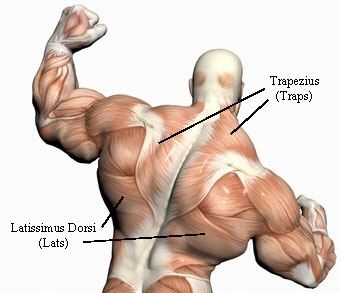 Combining hijama therapy with massage is the most greatest way to improve muscle recovery after a heavy workout. We all like to stay fit and strong and that is why many of us go to the gym and exercise with weights to build muscle. We have to understand that when working out with weights we are actually injuring ourselves, our muscles get torn at a microscopic level. That is why a good food diet plan is followed after working out to help recover the body. Blood plays a huge role when the body is trying to recover, that is where hijama comes in to draw the blood to the surface and to the muscles. Also by performing wet hijama therapy, it will help detoxify by taking out harmful toxins and pathogens to help the blood circulate and heal the muscles. Below is an article explaining an experiment that was carried out on exercise and massage.
Combining hijama therapy with massage is the most greatest way to improve muscle recovery after a heavy workout. We all like to stay fit and strong and that is why many of us go to the gym and exercise with weights to build muscle. We have to understand that when working out with weights we are actually injuring ourselves, our muscles get torn at a microscopic level. That is why a good food diet plan is followed after working out to help recover the body. Blood plays a huge role when the body is trying to recover, that is where hijama comes in to draw the blood to the surface and to the muscles. Also by performing wet hijama therapy, it will help detoxify by taking out harmful toxins and pathogens to help the blood circulate and heal the muscles. Below is an article explaining an experiment that was carried out on exercise and massage.
Study Finds Sports Massage Has a Positive Effect
By Wendy Bumgardner, About.com Guide Updated October 22, 2009
Does sports massage after intense exercise speed muscle recovery? While athletes of every kind use sports massage, the hard research into whether and how it works has been sparse. But a 2008 study by Ohio State University researchers found evidence that Swedish massage improved the time it took for the muscle to recover and the massaged muscles had less damage and less evidence of swelling and inflammation.
Massage Study Tests Muscle Recovery
The four-day study was performed on rabbits rather than humans. They were sedated and their muscles put through simulated exercise. The test group of rabbits then received simulated massage while a control group didn’t get massage. The massage imitated Swedish massage techniques, which are the most popular for sports massage with long strokes, kneading, friction, and joint movement. After the exercise and massage, the researchers tested the muscle tissues of all of the animals. The specific muscle tested was the anterior tibialis, which in humans is the shin muscle that often complains with shin splint pain when you begin or change your walking program.
Massaged Muscles Showed Improved Recovery
The difference in strength recovery between massaged muscles was significant – 60% strength compared to 15% for the non-massaged muscles. The researchers also saw that the massaged muscles had fewer damaged muscle fibers and no sign of white blood cells present to repair muscle damage. The massaged muscles showed less sign of swelling, weighing 8% less than the non-massaged muscles.
Previous Human Study Didn’t Find Recovery Effect
While the rabbits showed some effects of improved muscle recovery from massage, a previous study of human cyclists published in the April, 2004 issue of the British Journal of Sports Medicine concluded that there was no measurable effect in the ability of their leg muscles to perform after either of leg massage or resting recovery. But the cyclists reported less fatigue after massage.
Sources:
Butterfield TA, Zhao Y, Agarwal S, Haq F, Best TM. “Cyclic compressive loading facilitates recovery after eccentric exercise.” Med Sci Sports Exerc. 2008 Jul;40(7):1289-96.
A Robertson, J M Watt, S D R Galloway. “Effects of leg massage on recovery from high intensity cycling exercise.” Br J Sports Med 2004;38:173-176.


